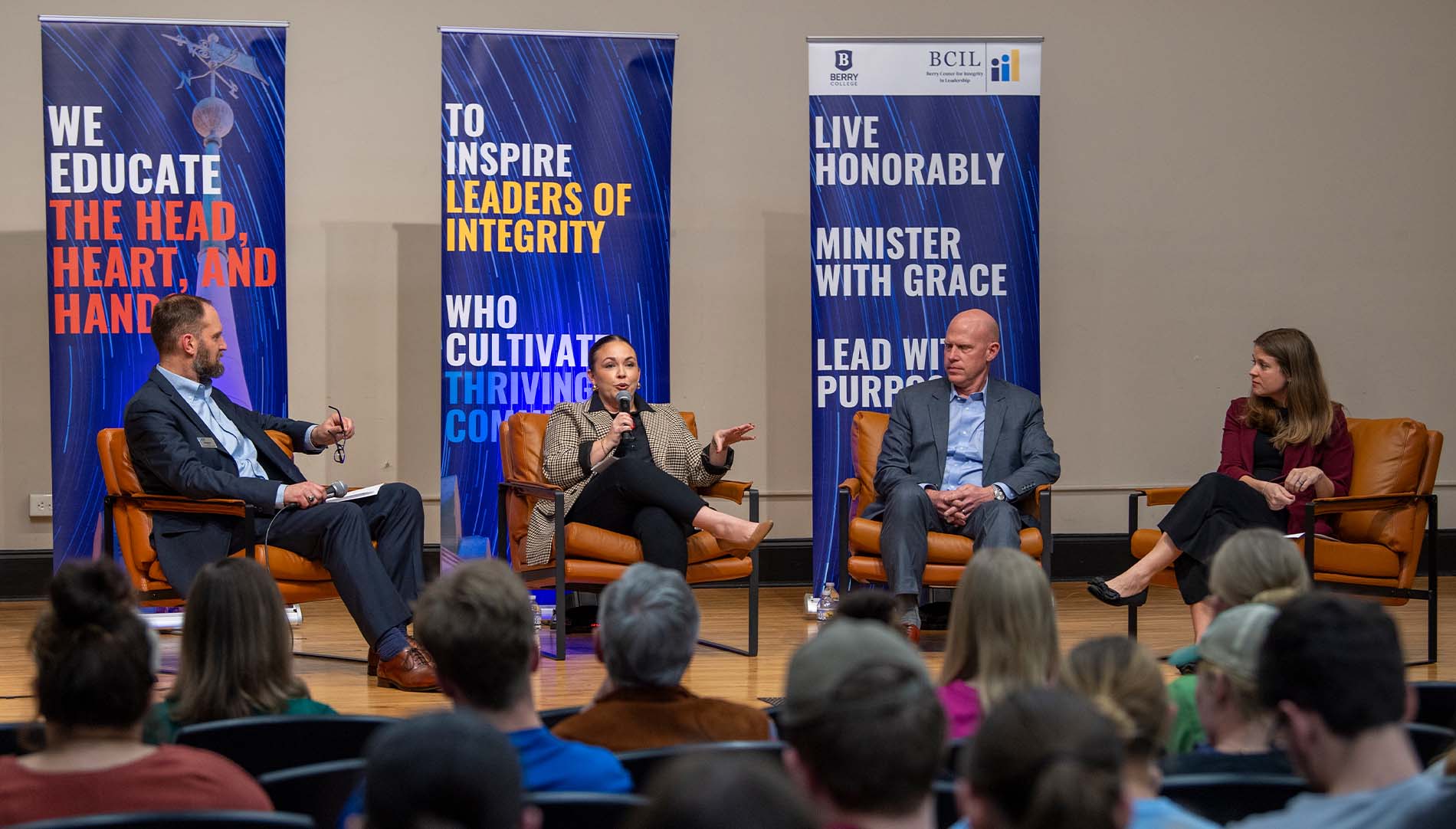Colleges and universities all over the country have different timelines and expectations for students in the college application process. Finding the right college fit for you takes time — which means you don’t want to wait until just a month or two before the first deadline. In fact, thinking it through as early as your sophomore year is advisable. Want to get a head start? Here is step-by-step advice — plus an application timeline — from the Berry College admissions team.
IDENTIFY THE PIECES on Your AdmissionS TO-DO LIST
Berry’s admissions team mantra is “the sooner, the better.” The key to a successful admissions process is knowing and planning for all the moving parts. This often takes some juggling, so it helps to get a quick overview of the admissions to-do list before you take a deep dive.
-
Research and visit colleges
-
Take standardized tests (if required)
-
Research and write scholarship essays
-
Apply to colleges and include:
-
Application details
-
High school transcript
-
Recommendation letters
-
College essays
-
Resume
-
Test scores (if required)
-
Note: Each of these items will have different tasks with timeframes — so read on!
DEADLINES — AND WHAT THEY MEAN
Once you have a handle on all that you will be responsible for, start tracking your deadlines and identify which timeline you want to be on.
Early decision vs. early action – Many schools offer earlier deadlines. For some, the “early decision” process requires a binding agreement to attend the school if a student is accepted. In contrast, other schools, like Berry, use “early action,” which is not a binding agreement; rather, it allows students to apply earlier so that they know before the end of the fall semester whether they have been accepted or not. This earlier consideration allows students to apply for a larger range of scholarship opportunities.
Regular decision vs. rolling admissions – If you are not applying on an “early” timeline, then you are likely applying either for regular decision, typically beginning in November, or rolling admissions. Colleges with rolling admissions open their application for submission, and they admit students as the applications come in — rather than in a bunch. Regular decision is the final date to apply for a certain college.
MONTH-TO-MONTH TIMELINE
Now that you have a broad idea of all the pieces you are juggling, here is your ideal admissions timeline while in high school. Aim for these dates as a goal, but not as a requirement for yourself. This timeline is built to give you the most options possible. But if you need to, give yourself room and flexibility in this season to rethink things and make mistakes. All these dates/times are set early (as if you’re applying to at least one school early action or early decision).
Summer after sophomore year: June/July
-
Consider your why – Why do you think college is your next step? Do you have certain interests? Do certain institutions have goals and values that align with your own? Get to know what you’re looking for in a college by first reflecting on what you want out of your experience.
-
Research schools – Learn more about the academic programs, financial aid packages, clubs and activities, and location of a college. Look for FAQ pages like this one.
-
Make your college list – Have a good sense of schools that fit your aspirations and where you are likely to be accepted. Know which schools are a good match or where you are a shoo-in, and then determine which schools you want to apply to but where you might not be as likely to get accepted.
Junior year: fall
-
Visit schools and keep researching – Use weekends or fall breaks to visit places that you found interesting during your research. Can’t buy a plane ticket? No problem! Many schools have virtual tours like this one. Also, take note of their deadlines now. As you visit colleges, you might add others to your list, and some might drop off.
-
Interested in athletics? – If you’re curious about playing a sport in college, many colleges have recruitment questionnaires you can fill out online or when you visit. For example, take a look at Berry’s questionnaire.
-
Begin researching scholarship options – Scholarships are not just available through colleges. Begin asking your school counselor and other organizations you are involved in about local scholarships. Again, go ahead and track these deadlines.
-
Practice testing – If you are going to take standardized tests, this fall is a great time to get your practice tests out of the way. Prepare yourself for success.
Junior year: spring
-
Continue steps begun in the fall – Narrowing down where you want to apply can be easy for some, and tough for others. By starting in the fall, you’ve given yourself space to think.
-
Take your first round of standardized tests – Schedule it and show up!
-
Update your resume – Maybe you’ve never had a resume before or maybe you have. Either way, start recording your involvement, jobs, accomplishments, etc.
Junior year: summer
-
Map it out – Nail down the places you are applying to, and build yourself an application deadline plan. What’s due when and where? Will you use the Common Application? If so, do you know which schools include it?
-
Sign up – If you haven’t connected with an admissions counselor at a visit, get in touch now and start signing up for application portals. Fill out the easy details!
-
Letters of recommendation – Give the people you plan to ask for letters of recommendation plenty of notice. Consider making a small packet to share (include your resume as well as information about why you’re applying to certain colleges).
-
College and scholarship essays – Begin collecting the required topics and brainstorming ideas.
Senior year: August–October
-
Connect with admissions counselors – At every school, you are assigned an admissions counselor who can help you navigate the process. If you haven’t already, make sure that you call and connect with them and let them shepherd your process. It is better that counselors really know you when they begin reading your application.
-
College and scholarship essays – It’s time to start drafting, especially if you plan to apply early action. Once you draft and revise, find knowledgeable people to give you feedback. Consider people who know you well or people with strong writing/communication skills.
-
Collect required documents – For those applying in November, make sure your documents are in at least a month before your deadline. Check, check and recheck that your information has been sent to the proper place and uploaded in the correct format.
-
Standardized testing – Maybe you’re trying to get a certain score for a scholarship! Use the fall to take any final standardized tests one last time.
-
File your FAFSA – You can file the Free Application for Federal Student Aid (FAFSA). This process often takes lots of time to gather documents. Do not mail them to your college choices. Instead, organize documents so you are ready when you need to file the FAFSA. Our admissions counselors recommend checking out this website for detailed instructions.
Looking at the process all at once may be overwhelming, but keep this picture in mind: Squirrels consistently store up lots of acorns over a long time in preparation for winter. Likewise, accomplish small pieces of the admission process day by day. Using this timeline will help you prepare slowly and consistently over your last two years of high school. By getting yourself ready early, you can confidently address any hiccups or slowdowns along the way.
Revised February 10, 2025



